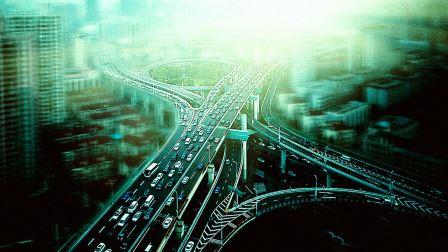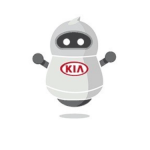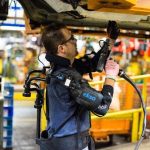Apple’s $1 Billion Bet on Didi Chuxing, & 12 Big Questions About What’s Next for Cars
Apple‘s announcement last night that it is investing $1 billion in Didi Chuxing, China’s largest ride-sharing company, is just the latest signal that the future of cars will be radically different from anything we have imagined for more than a century. The collision of Silicon Valley technology and the car industry is a tectonic technological transition. (Let’s call it a TTT.) It is perhaps the most consequential encounter yet between disruptive, Valley-based technologies and a meaningful, enormous, deeply established, and highly functional industry. Meshing software and a two-ton hunk of steel and mechanical engineering that people’s lives depend on is much harder than meshing software and, say, editorial content. It’s also much less predictable.
In the hours since Apple and Didi announced the investment, pundits have posited all kinds of reasons for the investment, all kinds of consequences, and all kinds of conclusions about Apple—and there are, in fact, good and obvious reasons for Apple to invest in Didi, and for Didi to welcome the Cupertino giant as a potential partner.
Apple is actively exploring the car business, which is entirely in keeping with the company’s mantra of trying to use technology to improve service in sectors that are technologically backwards and unfriendly to consumers. You can argue about whether cars are currently optimized for consumers; the traffic on the Brooklyn Queens Expressway this morning suggests not. But there’s no question that until the last three or four years, the car business was primarily focused on milking its existing paradigm as fully as it could. (Why, for instance, do car dealers still exist?) But now GM, Ford, Toyota, and many other leading car manufacturers acknowledge that their future will be radically different from their past. Apple believes it belongs somewhere in the midst of that radical transformation.
But the rush to predict exactly what this investment means is foolhardy. So is the rush to predict a winner in the battle between Uber and Lyft, or the result of Lyft and Uber being regulated more strictly in Austin, or the success or failure of Ford’s partnership with Google and Uber to promote autonomous cars. This is one of those exciting, terrifying transitions where everyone is scrambling into an undetermined future. Recently, I’ve been speaking to executives at the leading mobility companies in Detroit and Silicon Valley, and most have eventually told me, in these very words: “Everyone is talking to everyone. None of us know where this will all end up.”
Here’s the equation that will determine the future of the car business: Ride sharing + car sharing + ride-hailing apps + electric motors + autonomous vehicles + unforeseeable developments in software, manufacturing, distribution, and consumer preferences = what, exactly?
The desire for clear answers is deeply understandable. Investors are worried about the impact of this transition on some of the most widely held stocks in the world. Environmentalists can’t wait for the mainstreaming of electric cars. Also wondering nervously about the future is anyone employed by the broadly defined auto industry, including the 640,000 people employed by Detroit’s Big Three and the millions of people now driving for Uber, Lyft, Didi, and other such services around the globe.
Those Big Three employees are faced with statistics like this: Barclay’s analyst Brian Johnson believes that nearly half of GM and Ford’s 30 auto factories in the U.S. and Canada will close in the foreseeable future as car ownership dwindles. Unfurl those kinds of consequences across the rest of the automobile supply chain—all those companies making seats and tires and rearview mirrors—and you’re looking at big changes throughout the economy. And all those ride-sharing drivers? They’re simply faced with the possibility of being replaced by the software that will guide autonomous cars. Limo and taxi drivers may well go the way of the milkman and the teletype operator.
Unfortunately, clear answers are hard to come by. As much as we want to quickly understand a certain strategic partnership or a certain technological shift, each development needs to be examined as but one piece of a complicated web that will be spun out over several years. How complicated is this web? Well, here are a dozen questions that the various players are busy trying to figure out:
How widely and how quickly will autonomous cars be accepted? As hard as it might be for an urbanite to imagine, many people love their cars. And if early autonomous vehicles cause a few well-publicized accidents, fear of the unknown could slow the trend, even to a halt.
Is owning a car factory an advantage or a disadvantage? In the minds of many from Silicon Valley, “Detroit” is a euphemism for inept. They believe the most important part of a car is its software, and they’re probably right. But isn’t a century’s worth of expertise worth something? And don’t get carried away about Tesla: Last year it delivered 50,580 cars, approximately one quarter of 1% of Detroit’s output.
Is ride sharing a commodity product? In Brooklyn, I can use a car-hailing app to get Uber, Lyft, Juno, or a taxi. I don’t see any significant difference between any of the services, each of which arrives quickly, charges similar fares, and offers clean cars and knowledgeable drivers. Selling a commodity tends to be a pretty awful business.
How long can ride-sharing companies like Uber and Lyft take a loss on many of the rides they provide, in their race to garner riders and drivers? “There’s never been a market as subsidized as this,” one venture capitalist told me. “We’ll only know the winners and losers after that settles down.”
Will governmental regulations slow or speed this transition? The environmental benefits of electric vehicles and fewer cars on the road are clear. Yet cities like New York, Austin, Berlin, and Paris have at different times threatened to strangle car sharing with regulations. Look at the airline business: Governments like regulating travel, for better or for worse.
What kind of “driver” or “passenger” insurance will be required? The average American driver now pays a bit less than $1,000 per year for auto insurance. But who is responsible when driverless cars collide?
Will we continue to personally own cars, or will we instead have monthly subscriptions to companies that will provide all the rides we need? Subscription services seem likely, but if my current subscriptions—to companies like Time Warner Cable and Verizon—are any model, quality suffers and prices creep up.
Why is it so difficult to design a driver-friendly dashboard? Mapping services and accurate engine diagnostics are welcome additions to the information a driver can see, but more data has resulted in cluttered screens using interactive controls designed for phones or laptops. Steve Jobs understood that the user interface was the most important part of any consumer technology. Can Apple solve this problem?
Are Uber and Lyft drivers employees or contractors? This is an issue of short-term importance but is caught up in a broader societal concern: how to define those who participate in the so-called “gig economy.”
Who has the most important leverage? The company that designs a car’s software? The manufacturer? Or is it Uber, whose app is used by so many consumers? As with any nascent transition, it’s hard to know what will emerge as the most important bottleneck.
Can any ride-sharing company become a truly international brand, or will local services trump those ambitions? Uber is losing billions of dollars trying to snare a leading market share in Asian countries. No one knows exactly how much resistance it will face from governments that prefer local providers.
How strong are the network effects that Uber gains by being such a well-funded first mover? Benchmark VC Bill Gurley likes to point to this tweet as a key reason that Uber will continue to thrive. But if car sharing has as much subsidization and government interference as the airline industry, will those network effects hold true?
There are many more such questions. Even the simplest may have unlikely repercussions. For instance, the battle over the employment status of ride-share drivers obscures the societal good that will occur if autonomous cars get so good and reliable that ride-sharing prices plummet. In a city like Detroit, which is ill-served by mass transit, low prices could make getting to and from jobs much easier for the city’s poorest residents. Uber’s network effects are remarkably strong, but fears of the societal cost of letting them play out will likely prompt regulatory resistance for years, especially in countries like China.
What makes all of this even harder to understand, of course, is that in a culture that prizes perception almost as much as achievement, every company will be busy positioning itself as a leader, primarily via the hot air of a thousand press releases announcing a million and one terribly important developments, partnerships, and “innovations.” Take it with a grain of salt. As one venture capitalist recently told me: “You’ve got to look past the press release.” He’s right—even about his own company’s many announcements.
Fast Company , Read Full Story
(3)













